There has been no breed in Europe more rigorously and bureaucratically supervised than the French horse. In the seventeenth century, the Service de Haras was established to administer the breeding of six breeds of blood horses, nine cold bloods and thirteen varieties of pony.
Like most of the breeds in Europe, the Selle Français is the result of Thoroughbred stallions crossed over the farmer’s working mares. In France this practice was officially recognized by ministerial decree (the French book certainly leads the way in the regulation stakes) in 1914. This decree set out to regulate the ‘half-bred’ or ‘demi-sange’ result of the crossing of the Thoroughbred stallions over native mares.
Three breeding regions developed: Normandy (with stallion selections in Caen), Vendée (stallion selections at La Roche sur Yon), and the Centre, or Charolais, selections at Cluny. Today, nearly ninety percent of the Selle Français horses trace back to the Anglo-Normand.
The area of Normandy has long been prime horse raising country and the Anglo-Normand descends from the medieval Normand war horse. In the eighteenth and nineteenth centuries, Thoroughbred, Arab and Trotter blood was used to produce the Anglo-Normand cavalry horse. It was this cavalry horse that laid the foundation for the Selle Français. The Trotter blood has been associated with some great jumping horses, most notably Galoubet and the Olympic jumping star, Jappeloup, who was by the Trotter stallion, Tyrol II.
The ‘Horse Versailles’ – Le Pin stud farm, established in 1665 by Louis XIV but finally built in 1728
The French horse has always been the product of a melting pot as French equestrian journalist, Pascal Renauldon points out: “Anything that was useful for producing showjumping horses was alright by the studbook. Thoroughbred stallions were imported from England and Ireland and also Trotters were frequently used. The latter breed has only faded into the background fairly recently. Also the Anglo-Arabian has always been used for Selle Français breeding. Considering such a genetic melting pot, how can one still bicker about the purity of the breed?” (Z Magazine, June 2004).
Between the wars, equestrian sport in France was dominated by military officers. The first civilians to feature were Chevalier d’Orgeix, a bronze medallist at the London Games in 1948 on Sucre de Pomme, and Pierre Jonquéres d’Oriola, who took the gold medal at the Helsinki Games in 1952 on Ali Baba.
Chevalier d’Orgeix, a bronze medallist at the London Games in 1948 on Sucre de Pomme
As the working horse faded from the scene, riding clubs started to spring up and with it the sport of showjumping…. And jumping breeding.
The three main existing half-bred breeding regions, together with the Anglo-Arabian half bred breeding area of the south-west, amalgamated at the Selle Français in 1958.
The breeding policy of the Selle Français is in the hands of the Service des Haras which has responsibility for the technical, economic and scientific developments in the horse breeding industry – as well as for the production, marketing and use of horses. They have the legal responsibility for ‘the identification, registration and control of their ancestry, their progeny and their performances; the assessment of the genetic value of the stallions and the publication of any information that may concern them.’
The Service maintains twenty-three stallion stations scattered over France and standing stallions from draught to sporthorses to Thoroughbred. Central to all this activity is SIRE (Système d’Identification Repertoriant les Equides) located at Pompadour. This body maintains computer records concerning identification (documents and stud books) and selection (breeding competitions and index ratings).
SIRE records the results of the mare shows organized by the national studs, and the gait and conformation assessments for two to five year old horses. Competition results from dressage, eventing and showjumping are entered on another computer data base in Paris, at the Societé de Steeplechases, to produce a simplified rating system for stallions and their progeny. Yet another computer at the National Institute of Research (INRA) processes competition results to produce indexes of genetic value. There is an individual index for each horse’s performance in each discipline: showjumping (ISO), eventing (ICC) and dressage (IDR).
In 1988 the famous (or infamous, depending on you view) BLUP was introduced. The Best Linear Unbiased Predictor is a mathematical model that has been used to predict everything from the frequency of volcano eruptions to the growth rates of chickens. In the case of the French horse, the BLUP is calculated from the ISOs of relatives, the sire and dam (if and when they compete) and of their progeny; a foal is then born with a BLUP rating based the performances of his forebears and his siblings.
One of the most outspoken critics of the BLUP has been the French equestrian journalist, and breeder, Bernard le Courtois. Writing in the 1994 edition of Monneron, some six years after the introduction of the mathematical model, he had this to say:
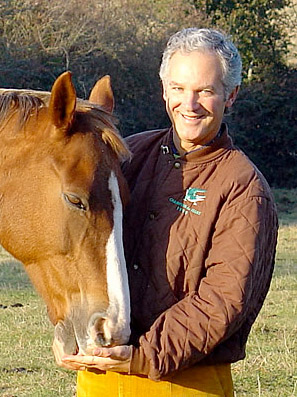 “In the beginning I was optimistic concerning the BLUP; even though I have always been convinced that nothing can replace experience and observation and the know how of a horseman. Today, with hindsight, I am aware of the system’s aberrations as well as the way in which it has been abused.”
“In the beginning I was optimistic concerning the BLUP; even though I have always been convinced that nothing can replace experience and observation and the know how of a horseman. Today, with hindsight, I am aware of the system’s aberrations as well as the way in which it has been abused.”
Le Courtois asserts that his judgment “is drawn from professional experience: as a stud farmer, owner, judge, dealer and most of all as a breeder passionately involved in sport horse selection.”
He is also well aware that the pressure for some sort of ‘objective’ guide comes in part from the phasing out of the traditional breeders to a new generation of ‘town’ breeders. This is compounded by a National Stud staffed by “executives who do not have the practical training their predecessors received, thanks to present modes of recruitment and training.”
“Many newcomers in the horse world grabbed onto BLUP like a childishly simple life-buoy. Suddenly they felt on an equal par with the professionals, imagining that this index would make up for their lack of knowledge, without realising that they were fooling themselves. They hid behind the BLUP, believing it would protect them.”
He turns to the evidence of the scientist, Professor Signoret: “The principal of the BLUP method is excessively simple, even simplistic. It affirms a priori that a foal that is born will, providing all else is equal, represent an average between his father and mother. Breeders, genetic specialists, and those involved in improving domestic breeds know that, generally speaking, this is not the case. Only milk production is the happy exception confirmed by experience.” It turns out that the equine BLUP index is nothing more than an adaptation of the American milk BLUP index!
Norton de Rhuys – top competitor, lousy BLUP
Le Courtois examines what would have happened if all horses with a poor BLUP were excluded from breeding:
“Just looking at the top competitions and the list of the 10 highest winning French horses for 1992, it is quickly apparent that half of them were born with a BLUP lower than 10: Roxanne de Gruchy, Norton de Rhuys, Nonix, President Papillon, and Orient de Frebourg. The others were concentrated around the same paternal origins with high BLUP’s such as Laudanum (father of Raspail), Uriel (father of Paladin des Ifs) or Jalisco B (father of Quidam de Revel and Quito de Baussy). The list could be added to with the most recent medal winners, all born with low BLUP’s. Morgat (gold and bronze medal winner at the World Championships), Quinta (gold medal winner at the European Championships), Sissi de la Lande (Silver medal at the European Championships) without mentioning of course, Jappeloup.”
Le Courtois also makes the point that the loading of +21 for Selle Français stallions excludes the valuable outcrosses of Thoroughbred and foreign stallions, and concentrates the bloodlines more and more on a few established French lines.
Grand Veneur – he would have been a ‘BLUP’ casualty!
Le Courtois invites us to consider the case of: “Grand Veneur, who was considered to be a brilliant stallion (an opinion uttered in caution) comes from a succession of minor stallions linked to good mothering stock, retracing to the Thoroughbred, Ultimate. Ultimate was one of the best post war Thoroughbreds: sire of Kultimate, himself sire of Quirinal, two stallions who never left their mark. The latter engendered Amour du Bois, a stallion who left no long lasting memories and yet is the sire of Grand Veneur. Here are two examples of sporadic genetics. Had the producers been selected by the BLUP at that time, Kultimate or Quirinal would certainly never have been stallions and Grand Veneur would never have been born.”
To strengthen his case, Bernard turns to the example of “the stud farm at Zangersheide in Belgium where the fantastic Almé was kept for several years. This stud farm stuck rigidly to Hanoverian, yet did have a Holsteiner mare, Heureka, a one-time winner of the Grand Prix at Aix La Chapelle. It was from this mare that “Z” had their crack foal, after 20 years of breeding and several hundred births. Champion of the World Cup, Olympic vice champion Ratina Z (Ramiro and Argentina Z by Almé and Heureka). No index could have forecast the magic made by mixing Holsteiner (Ramiro) and Heureka and French Sport blood (Almé). It must be understood for once and for all that not everything in breeding is measurable.”
It would seem that the BLUP system was more influential in France than the FN ratings have become in Germany: “It is true that it is becoming impossible to sell males or females if they do not carry high BLUP rating. Some buyers will not even bother to look at foals with a BLUP below 15. On the other hand, the systems perversions are helpful to those who sell useless horses to novices who look no further than the BLUP rating.”
Bernard intends continuing to use the traditional skills of a breeder: “Up till now I have never chosen a stallion or a mare on the strength of its BLUP, and I have never tried to use BLUP for breeding. I hope I never will. When I choose a mare for say Jalisco, the only thing that counts is that she is close to the blood, distinguished with good hind quarters. Above all I wish the mare and the stallion to complement each other. If I send a mare to Galoubet (the highest ranking BLUP on the market) I do not care about the index. I try to produce above all a rather stocky foal, but with good lines and blood, because the good international Galoubets are made that way. If I bought the exceptional sport Thoroughbreds, Laudanum and Hand in Glove, and used them with the daughters of Almé, it was simply because it was a crossing that appealed to me, and because I believe that sport Thoroughbreds have a role to play in improving breeding stock. It is not the fact that Laudanum has a very high BLUP, while Hand in Glove has none (his sporting career was made in USA) that justifies my crossbreeding. I deplore the way that Hand in Glove’s products are unfairly treated, compared to those of Laudanum because of the current blupmania.”
Hand in Glove – treated unjustly?
He concludes with a rousing call to arms: “I remain convinced that the setting up of a numbered index to give an objective value to each horse can be useful in compensating for insufficient knowledge or judgment. But it is an elementary estimation, not comparable to the opinion of a true connoisseur… The present and predictable effects of such a use are likely to weaken the potential and diversity of the breed, to exclude the possibility of using certain exceptional subjects and to degrade breeding and destabilize the market. That is why I say today, Stop the BLUP.”
Footnote: And it was Bernard le Courtois as President of the Selle Français who was able to announce the death of the BLUP in 2013…

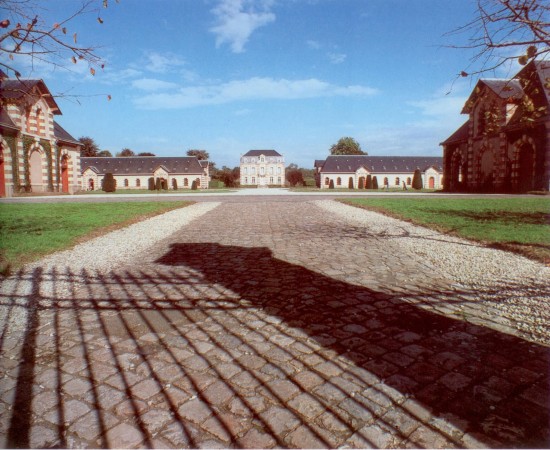
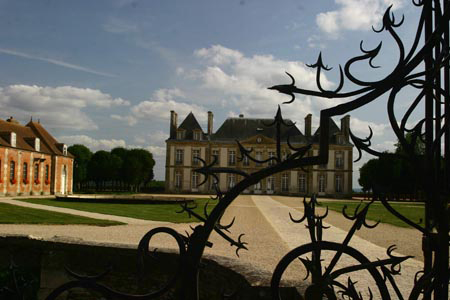
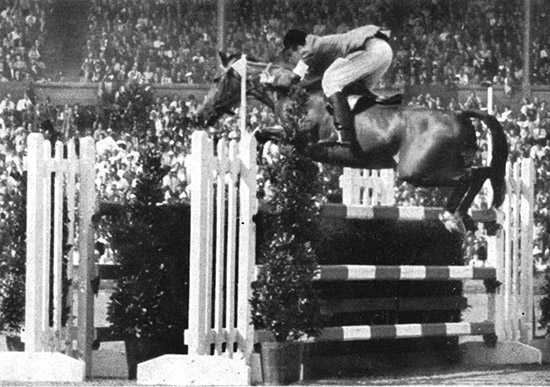

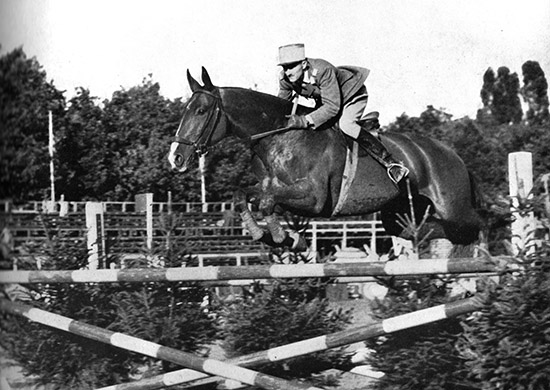
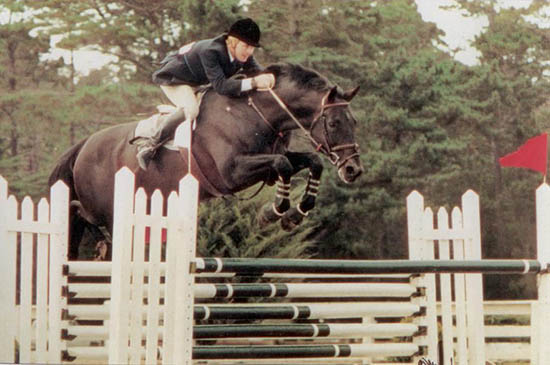
Hi iam trying to find a boulinnias stallion for my 13yrs mare. I would keep the foal. I live in the uk